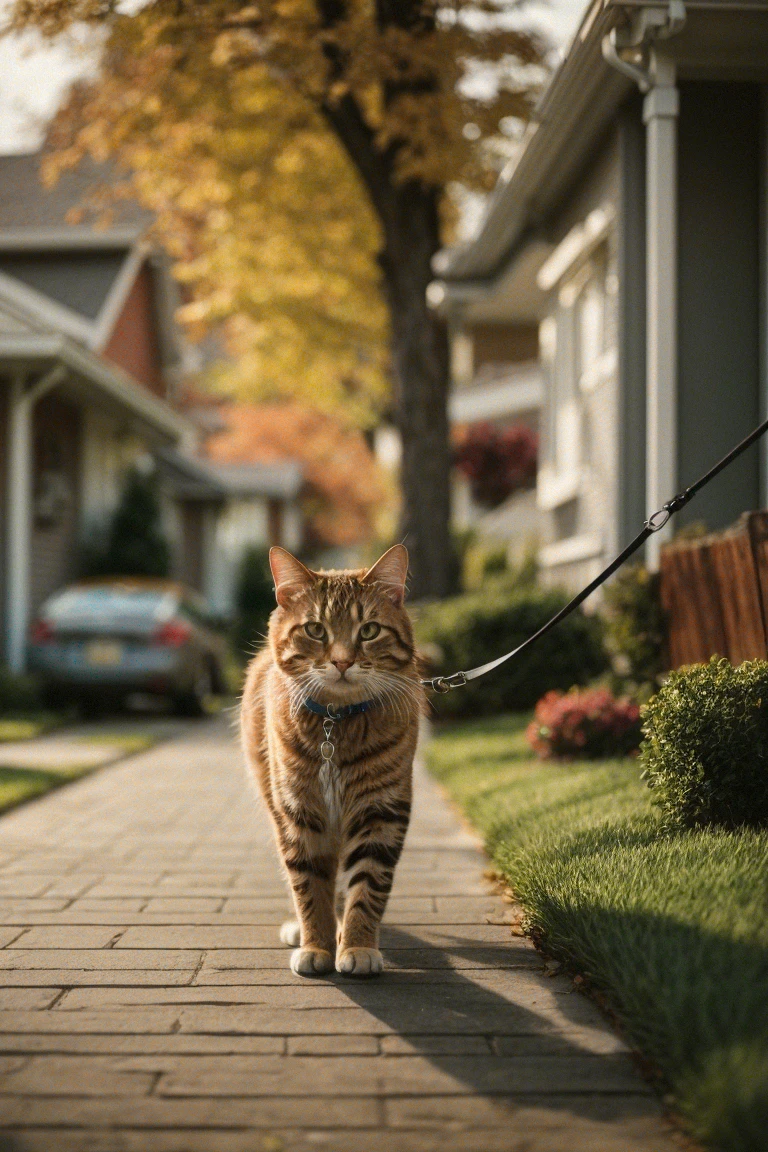How to Teach Your Cat to Walk on a Leash (The Easy Way!)

Teaching your cat to walk on a leash and harness can seem daunting, but with some patience and positive reinforcement, your feline friend can learn to enjoy strolling outside. Walking on a leash provides mental stimulation and exercise for indoor cats while allowing you to safely enjoy the outdoors together. Follow this simple step-by-step guide to leash train your cat the easy way.
Supplies You'll Need
Before starting leash training, gather the proper supplies to set your cat up for success:
- Harness and leash - Use a harness designed specifically for cats, not dogs. Make sure it fits properly and doesn't restrict movement. Choose a lightweight leash 4-6 feet long.
- Treats - Have your cat's favorite treats on hand to reward good behavior.
- Patience - Leash training requires regular practice and positive reinforcement. Expect the process to take a few weeks. Don't get frustrated.
Step 1: Get Your Cat Comfortable Wearing a Harness
Introducing a harness is an important first step in leash training. Follow these tips for success:
- Place the harness on the floor and let your cat inspect it. Reward any interest in the harness with treats.
- Once your cat is comfortable with the harness nearby, hold it up to your cat's nose so he associates the smell with treats.
- Next, unclip the harness and hold it open, luring your cat to step through with a treat. Do not force it on.
- Once your cat steps through willingly, clip the harness gently and reward him.
- At first, only leave the harness on for short sessions of 5-10 minutes. Reward your cat for calm behavior.
- Gradually increase the duration your cat wears the harness, rewarding him frequently with praise and treats.
Step 2: Attach the Leash
After your cat is comfortable wearing the harness for 30 minutes or longer, it's time to attach the leash:
- Clip on the leash as your cat is wearing the harness and let him walk around while keeping the leash loose.
- If your cat seems disturbed by the leash, provide reassurance and treats for calm behavior.
- Practice having the leash attached for short sessions, gradually increasing the duration.
- Be sure to supervise your cat during these sessions to avoid escape or injury.
Step 3: Introduce Gentle Guidance
Once your cat tolerates wearing the harness and leash consistently, start providing gentle guidance:
- With the leash attached, tempt your cat to walk toward you using a treat. Reward following the guidance.
- Gently pick up the leash and lead your cat short distances, rewarding cooperation.
- Limit sessions to 5 minutes or less initially, ending on a positive note.
- As your cat becomes comfortable following guidance, gradually lengthen the duration of sessions.
- If your cat resists or fights the leash, go back to a previous step and build confidence. Don't force or drag your cat.
Step 4: Practice Outside
After your cat reliably follows guidance indoors, it's time to practice outside:
- Choose a quiet, enclosed outdoor area without distractions for initial sessions.
- Keep first outdoor sessions very short, just a few minutes. Reward your cat for calm behavior.
- Only progress to open areas after your cat is confidently walking on leash in enclosed spaces.
- Use treats to keep your cat focused on you instead of distracted by the environment.
- End outdoor sessions on a positive note before your cat gets overly stimulated.
Troubleshooting Common Problems
Leash training does not always go smoothly. Here are some common problems and how to fix them:
Problem: My cat hates the harness and won't stop moving around.
Solution: Go back to step one. Slowly desensitize your cat to wearing a harness using treats, starting with just a few seconds at a time.
Problem: My cat flops over and refuses to move on the leash.
Solution: Use treats to coax a few steps at a time. Don't drag your cat. With patience, they will walk willingly.
Problem: My cat seems scared outside and tries to run off.
Solution: Bring your cat back indoors and soothe him. Next session, choose a less stimulating outdoor environment and keep it very brief.
Problem: My cat gets overstimulated and acts wildly on the leash.
Solution: Redirect this energy into a play session indoors after your walk. Outside, keep sessions short and end at the first sign of overstimulation.
Consistency is Key
Leash training requires regular, short practice sessions and plenty of patience. But the payoff is worth it - your cat can enjoy the outdoors while you have peace of mind knowing he is safe. Be consistent in your training and celebrate the small successes along the way. With time, your cat will happily walk outdoors by your side.